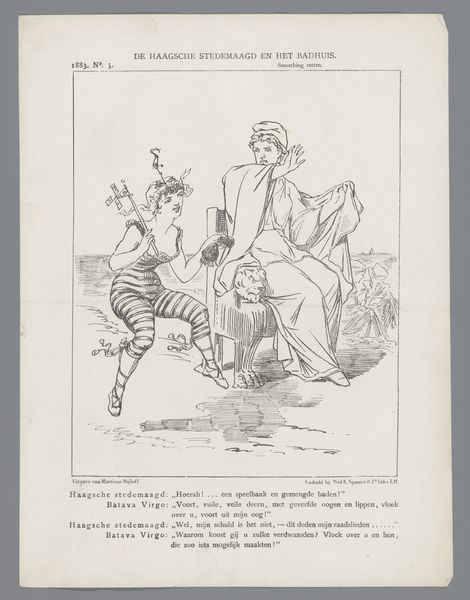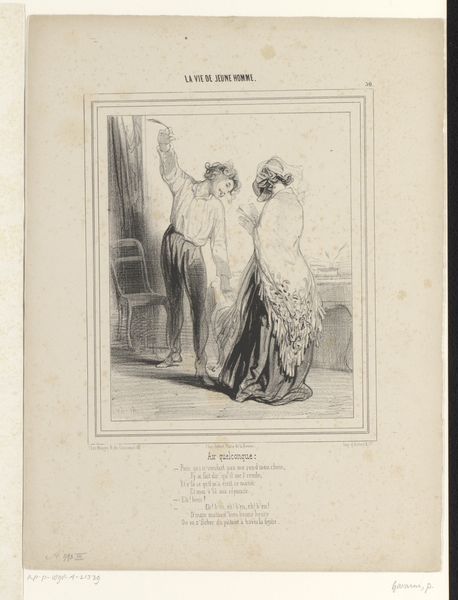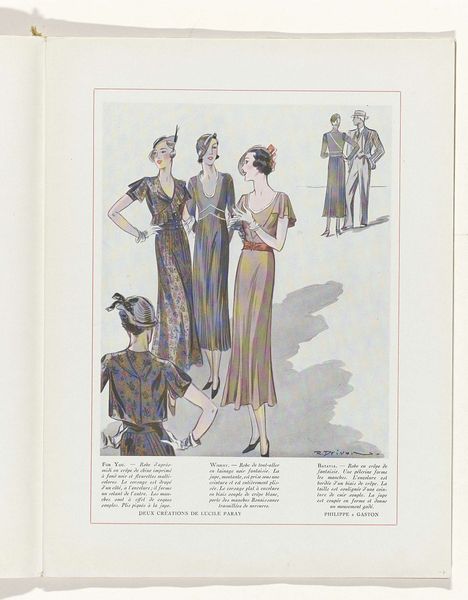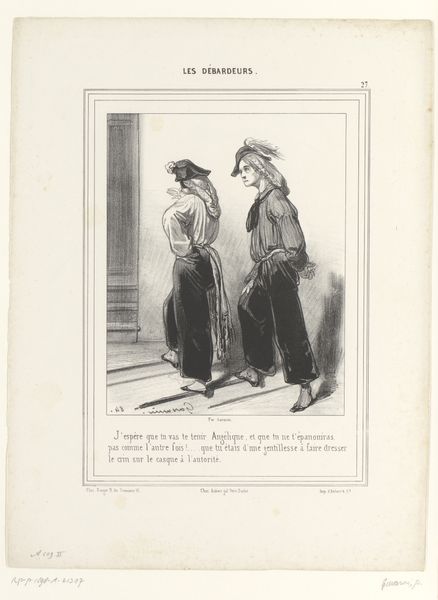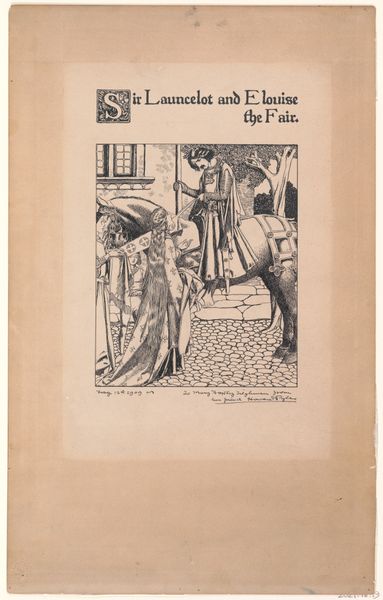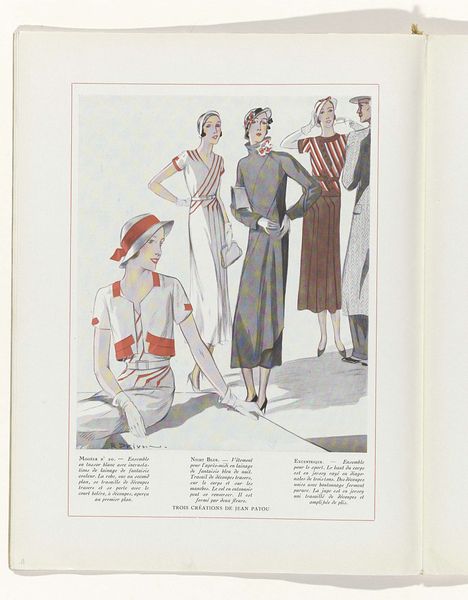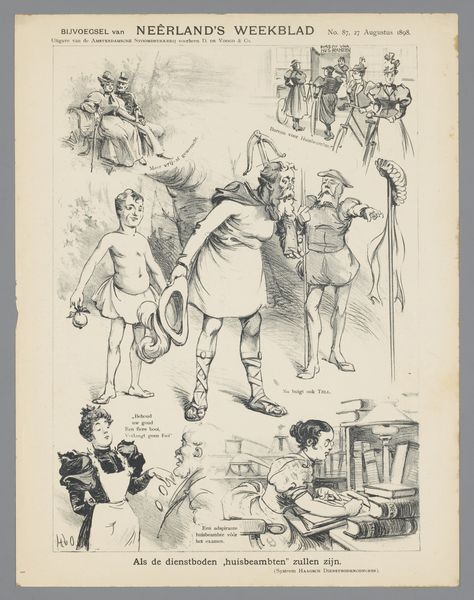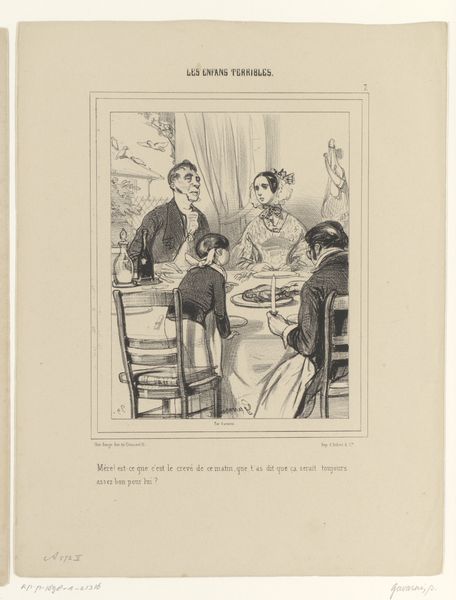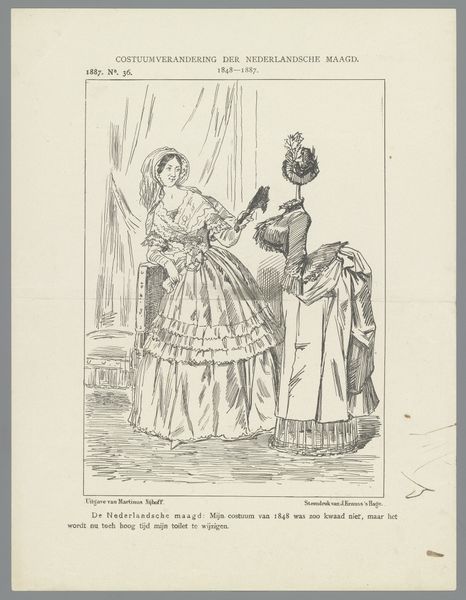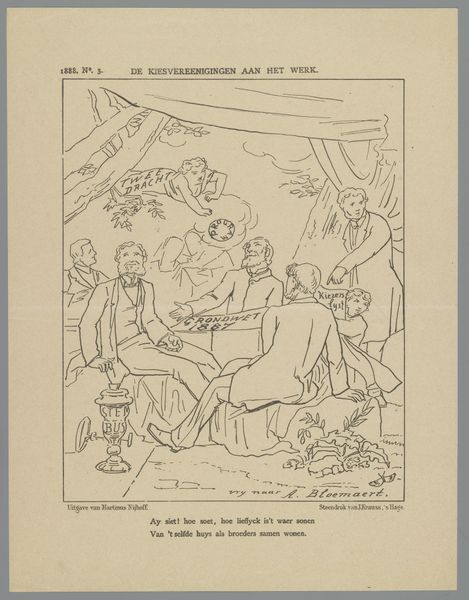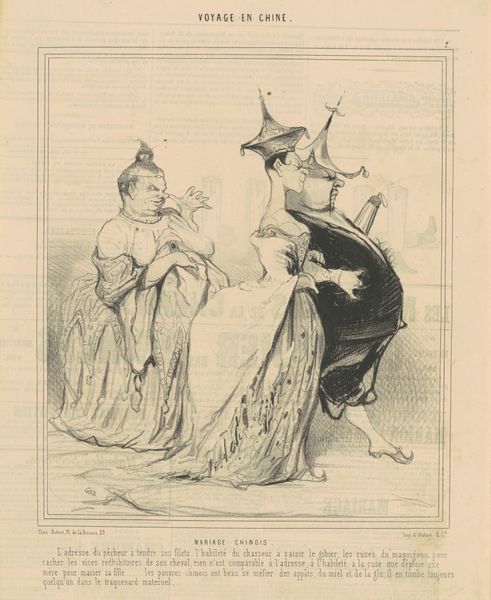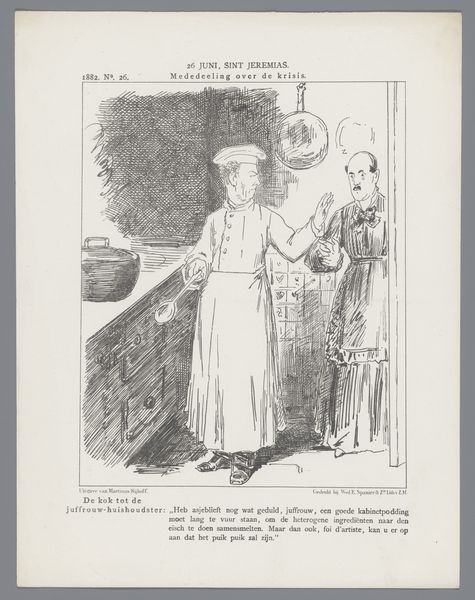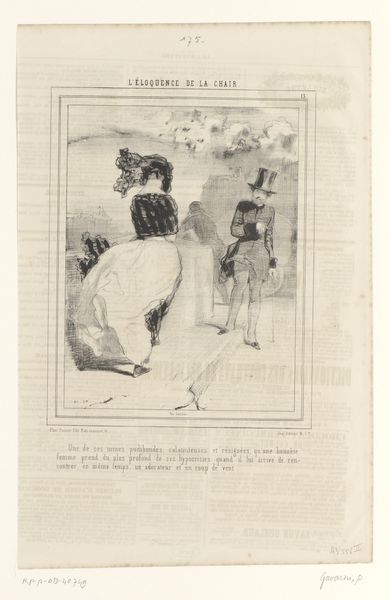
Femina, 1 Mai 1914, 14e Année, nr. 19: pagina 253: Elegant gezelschap tijdens de thé in een tuin 1914
0:00
0:00
drawing, print, paper, ink
#
portrait
#
drawing
#
aged paper
#
art-nouveau
#
paper non-digital material
# print
#
sketch book
#
traditional media
#
personal journal design
#
paper
#
personal sketchbook
#
ink
#
sketchwork
#
group-portraits
#
sketchbook drawing
#
storyboard and sketchbook work
#
sketchbook art
Dimensions: height 352 mm, width 284 mm
Copyright: Rijks Museum: Open Domain
Editor: This is an illustration titled "Femina, 1 Mai 1914," created in 1914. It appears to be a print combined with ink on paper. It's a very stylized group portrait depicting elegant figures in a garden setting. The textures are really captivating. What strikes you about its composition? Curator: The visual arrangement in "Femina" immediately brings forth some compelling elements for examination. Let us focus, if you will, on the strategic placement of figures within the pictorial space and the interplay between the solid forms and empty expanses that articulate depth and balance within the composition. The linework establishes an expressive contour. Does the arrangement not evoke the feeling of spatial harmony between elements? Editor: Yes, the way the artist balances the figures does give a sense of equilibrium. How does this arrangement, these lines, help in conveying its meaning? Curator: Allow us to examine the use of line, and the spatial organization with respect to the formal characteristics, which can often serve to illuminate deeper conceptual meanings inherent within the work. Could the linear details within garments perhaps hint towards larger motifs? Do they invoke certain visual cues relating specifically either toward fashion illustrations in publications, or society norms circa early twentieth centuries when analyzed holistically together against visual form principles as foundations themselves guiding comprehension when approaching such images originally instead even prior factoring influences or meanings imparted further outwards past strictly examining just solely their physical rendering via application through media? Editor: That's interesting. So, you're saying the style of the lines and how they're arranged are as significant as the scene they depict. I guess focusing on those intrinsic elements really allows you to peel back layers of meaning. Curator: Precisely. Dissecting it through line, form, and spatial arrangements offers an entryway into broader contextual interpretations and personal reflections when engaging in formalist analyses, so therefore this experience ultimately enhances appreciation across varying dimensional boundaries whether experienced individually during intimate observation phases alongside subsequent larger environments where it might also get studied beyond what single people feel about works. Editor: I see what you mean. I'll definitely look at art with a closer eye toward these formal aspects. Curator: Agreed; through critical observation of form in conjunction alongside spatial structure, works like ‘Femina' evolve beyond just surface representations transforming throughout analysis to open into comprehensive expressive tools.
Comments
No comments
Be the first to comment and join the conversation on the ultimate creative platform.
